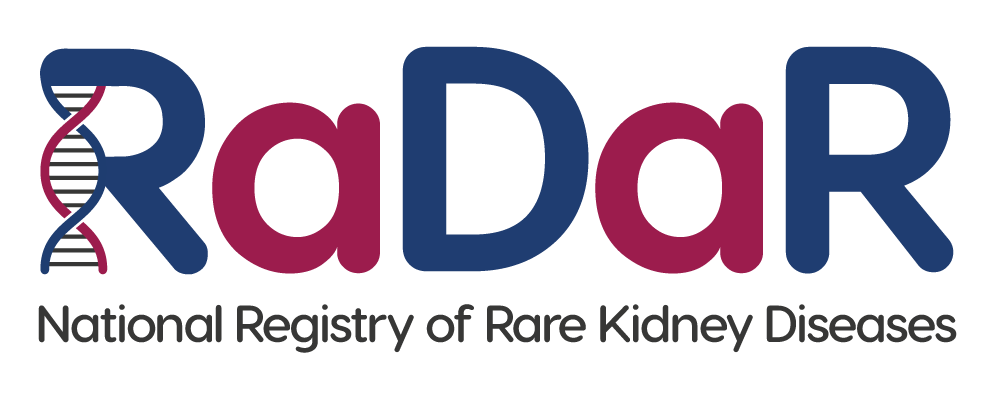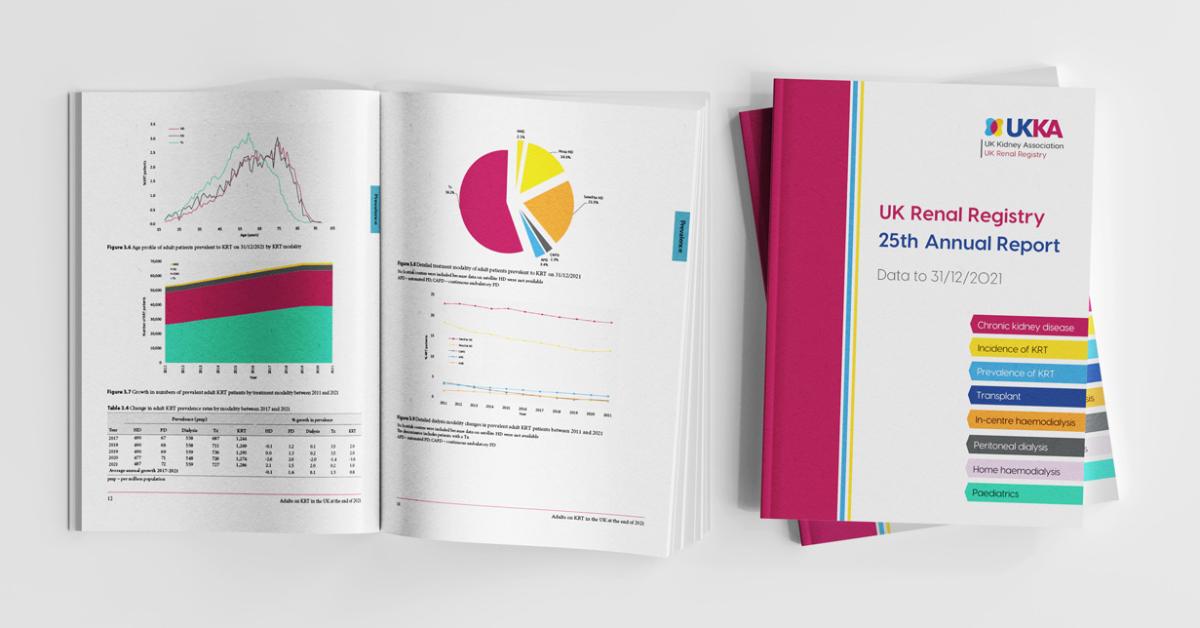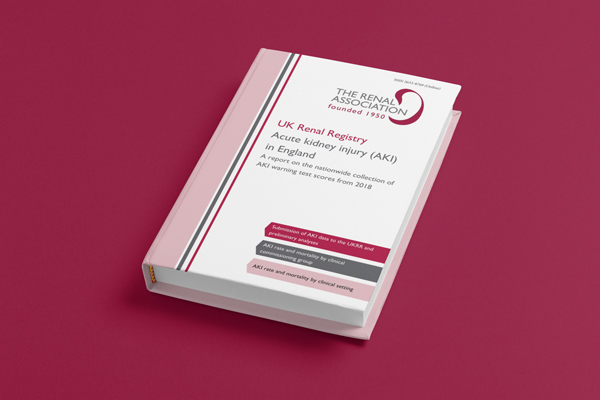Clinician Information
The terms membranoproliferative glomerulonephritis (MPGN) and mesangiocapillary glomerulonephritis (MCGN) are interchangeable and they refer to features of a kidney biopsy of cellular proliferation in the mesangial regions of the glomeruli (characterised by expansion of both cells and mesangial matrix) accompanied by thickening of the glomerular capillary walls.
In most cases, immunostaining in MPGN shows that antibody (IgG, IgM and/or IgA) and complement (C1q and C3) is deposited in the kidney. Electron microscopy usually shows sub-endothelial deposits, and the term MPGN type 1 has traditionally been used to describe this appearance. Rarely, complement C3 is found without significant antibody or C1q deposition. This is termed C3 glomerulopathy (C3G) which is subdivided into dense deposit disease (DDD) and C3 glomerulonephritis (C3GN).
Dense deposit disease (DDD) is defined by the presence of highly osmiophilic, ribbon-like deposits in the glomerular basement membrane. DDD used to be called MPGN type 2, however it can also occur without the light microscopic appearances of MPGN. Since the dense deposit contains C3 but usually not antibody, DDD is a type of C3G. Where there is C3G but no dense transformation of the basement membrane (ie discrete electron dense deposits are seen) this is referred to as C3 glomerulonephritis (C3GN).
MPGN is often seen where there is increased antibody production. This is most commonly seen in chronic infection (including bacterial, viral and other causes) and autoimmune diseases. In addition MPGN can be seen in the setting of cryoglobulinaemia and plasma cell dyscrasias.
In C3G and DDD there is minimal or no antibody deposition seen in the kidney. Although sometimes they can be triggered by an infection, these conditions are thought to result from an intrinsic disorder of the regulation of the complement system itself. This can occur in the presence of genetic factors (mutations of known complement regulating genes are seen in around 20% of patients) or antibodies, called C3 Nephritic Factors (C3NeF) that activate C3 (the central component of complement) directly. A C3NeF is found in around 80% of patients with DDD (and around 45% patients with C3GN) and is associated with macular drusen and eventual visual impairment. C3NeFs can also cause partial lipodystrophy, which is loss of fat in the upper half of the body.
It is important to identify any systemic or infectious disease that may be responsible for this renal lesion. In-depth investigations to rule out hepatitis and other viral infections; autoimmune disease; exclusion of plasma cell dyscrasia and cryoglobulinaemia are recommended in all patients. If these are negative then more detailed investigation of the complement system, including C3NeF, antibodies directed against complement regulators such as Complement Factor H and deficiency of Complement Factor H and Complement Factor I are recommended.
If there is a family history of similar disease then genetic studies of the complement regulating genes (including CFH, CFI, C3, CFB and the CFH-Related genes) are indicated. These are carried out in specialist centres. Among people from Cyprus a particular mutation of CFHR5 is especially common and this should be tested for in patients with Cypriot ancestry with known or suspected MPGN or C3G. Where there is no family history, genetic studies are usually performed on a research basis at present, although in some cases testing may help influence management decisions, such as whether to undertake living-related kidney transplantation.
Suggested investigations for patients with C3G.
Overall renal survival is variable, but most series suggest approximately 50% patients require renal replacement therapy within 20 years of diagnosis. Because a systemic defect (whether an antibody or a mutation of a complement regulator) is frequently present, disease recurrence post transplantation is common, with around 50% of grafts lost within 5 years. In addition, thrombotic microangiopathy is also sometimes seen following transplantation, presumably reflecting abnormal complement regulation in these patients.
Currently no treatment has been shown to be beneficial in these conditions. It is believed that good blood pressure control and ACE inhibition is likely to be beneficial and if an underlying systemic or infectious cause is identified it is logical to treat this. Immunosuppression is logical if possibly pathogenic antibodies (such as a C3NeF) are detected. Plasma exchange has also been used in this situation and to replace defective complement regulators, but there is no trial data (or licenced therapy) available. A key need is to develop effective treatments for these patients. In children there is limited evidence that alternate day high dose prednisolone may provide some benefit.
Since MPGN, DDD and C3GN are rare diseases, a UK-wide collaboration has been established to share knowledge about them under the RaDaR initiative (the MPGN/C3G Rare Disease Group). We aim to collect clinical information about patients with these diseases from across the country. It is hoped that combined experience from larger numbers of patients will improve understanding of what causes the diseases and speed up the development of treatments for them. Any UK patient with MPGN, DDD or C3G is eligible to participate in RaDaR, and this needs to be facilitated by their nephrologist.
The National Study of MPGN/DDD/C3G is a collaborative effort to collect samples from patients from across the country from patients with MPGN, DDD and C3G in order to identify and understand the causative factors. The study is working with the National Institute of Health Research BioResource, which is a government initiative, to perform comprehensive genetic analyses in patients with rare diseases (including MPGN/DDD/C3G) in order to understand the underlying genetic factors. Any UK patient with MPGN, DDD or C3G is eligible to participate in the National Study of MPGN/C3G. National Study of MPGN data entry guidelines
New treatments that might be beneficial in MPGN, DDD and C3G are currently under development. Once they have been shown to be safe, clinical trials will be needed to demonstrate efficacy in these diseases. If and when these clinical trials start, this webpage will be updated with the details.
Membranoproliferative glomerulonephritis and C3 glomerulopathy: resolving the confusion, Sethi et al, Kidney Int, 2012. Pathogenesis of the C3 glomerulopathies and reclassification of MPGN. Bomback & Appel, Nature Reviews Nephrology, 2012. Dense deposit disease. Smith et al, Mol Immunol, 2011 C3 glomerulonephritis and CFHR5 nephropathy. Gale & Maxwell, NDT, 2013 Acquired and genetic complement abnormalities play a critical role in dense deposit disease and other C3 glomerulopathies. Servais et al, Kidney Int, 2012 C3 glomerulopathy: consensus report. Pickering et al, Kidney Int. 2013




